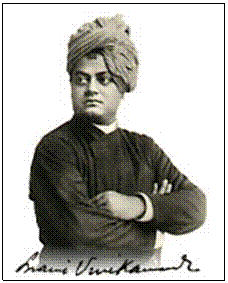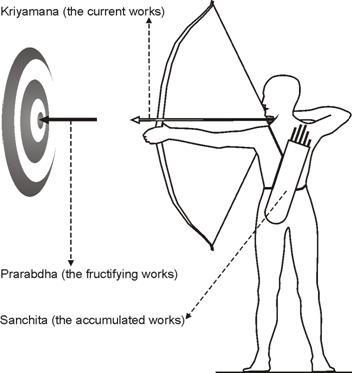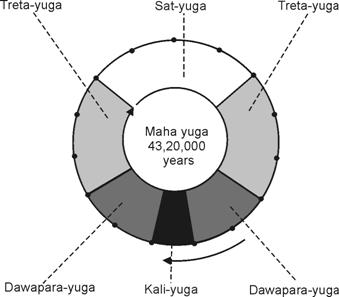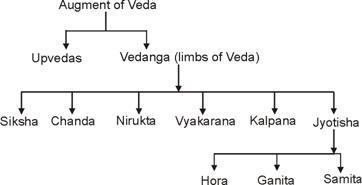Word Vedic Jyotish
Broadly, Indian astrology system is known as Vedic Jyotish (astrology). Word "Vedic" means "wisdom and truth". Word "Jyotish" is combination of words "Jyoti" and "Isht", which mean "light" and “God" respectively. So "Vedic Jyotish" means "True Light of God". Jyotish is also called an “eye”, because it allows us to see through the opaque time i.e. past, present and future.
Need of Vedic Jyotish
- The primary objective of Vedic Jyotish (astrology) helps us to understand God, liberate our soul from this material world and reunit with eternal supreme Lord.
- Secondary objective is to reveal past, present, future of an object and thus finding out the best natural course by identifying one's actual strength and weakness. A Vedic Jyotish (astrology) can virtually reveal anything, including past, present and future life. Theoretically, an astrologer can predict down to breath in and out level.
- Vedic Jyotish (astrology) also offers remedial measures to eliminate or dilute the problems in one's life. At a higher spiritual level it's considered as purification.
The above statements may look in contradiction with each other. In other words, if everything is pre-destined then what is the use of doing remedial measures? Does this mean that an astrologer can eliminate problems and thus capable of changing the destiny? The answer is no. If we look more deeply into a specific case, astrology tells us that it was pre-destined to meet with an astrologer and thus getting rid of problems by doing remedial measures suggested by an astrologer.
This leads us to another very important question. Does this mean that everything is pre-destined and we have no control over our destiny? Vedic Jyotish (astrology) tells us that we do have “free will”, but limited by our past Karmas (accumulated past physical or mental actions).
River of “free will” can change its course in the pre-defined field of Karma (accumulated past physical or mental actions). Let’s explore little more on Karma (accumulated past physical or mental actions).
Theory of Karma and “Free-will”
Vedic Jyotish (astrology) is based upon the relationship of cause and effect. Our past Karma (accumulated past physical or mental actions) gives us current results and thus influences our future Karmas (accumulated past physical or mental actions) too. Our Karma (accumulated past physical or mental actions) acts as a propeller and decided the next course of action for us. Karma (accumulated past physical or mental actions) is of four kinds –
1) |
Good |
2) |
Bad |
3) |
Good and bad |
4) |
Neither good nor bad |
For most of us, Karma (accumulated past physical or mental actions) can be neither being absolute good nor bad. If you do some action, it will do some good and some evil at the same time. So, we must try to do such actions that can bring the maximum of good and the minimum evil.
Karma (accumulated past physical or mental actions) has three sub components viz Sanchita (the accumulated works), Prarabdha (the fructifying works) and Kriyamana (the current works) -
- Sanchita (the accumulated works) : Sanchita is portion of Karma (accumulated past physical or mental actions), which is earned in the past life. It is reflected in the character of man, capabilities and his limitations.
- Prarabdha (the fructifying works) : Prarabdha is portion of Karma (accumulated past physical or mental actions), which is responsible for the present circumstances and body. It is ripe for reaping and only experience or Yoga can exhausts it.
- Kriyamana (the current works) : Kriyamana is that Karma (accumulated past physical or mental actions), which is now being made for the future.
The overall relation of above three components of Karma (accumulated past physical or mental actions) can be explained by bowman’s analogy. The arrows in the quiver of bowman are the Sanchita (the accumulated works). Bowman shoots an arrow, which cannot be recalled is the Prarabdha (the fructifying works). Bowman is about to shoot another arrow, which is the Kriyamana (the current works). Out of these three Karmas (accumulated past physical or mental actions), one has perfect control over the Sanchita (the accumulated works) and the Kriyamana (the current works), provided he uses the Prarabdha (the fructifying works) correctly. Refer to fig 1.1 : Bowman.
Fig 1.1 : Bowman
Grahas and Chakras
In Vedic Jyotish (astrology) we have seven spiritual Grahas (planets), which reveals our Karmas (accumulated past physical or mental actions) in past, present and future.
The human body is called Pinda (microcosms) and it is a miniature duplicate of Bramanda (macrocosm). Seven spiritual solar Grahas (planets) are manifestation of God and Graha (planet) manifests themselves in us. Seven spiritual Grahas (planets) are located at seven Chakras (subtle spiritual energy points) of human spine. Refer to fig 1.2 : Location of Chakras.
# |
Planet name |
Location in spine |
Chakra name |
1) |
Surya (Sun) |
Top of the head |
Sahartra |
2) |
Chander (Moon) |
Between eyebrows |
Ajna |
3) |
Budh (Mercury) |
Throat |
Vishudha |
4) |
Shukar (Venus) |
Heart |
Anahata |
5) |
Bharspati (Jupiter) |
Navel |
Swadishtana |
6) |
Mangal (Mars) |
Genitals |
Manipura |
7) |
Shani (Saturn) |
Perineum |
Muladhara |
Apart from these seven spiritual Graha (planets), we also have two shadow Graha (planets), which are known as Rahu (ascending node or dragon head) and Ketu (descending node or dragon Tail). Neptune, Uranus and Pluto are outside the scope of Vedic Jyotish (astrology).
It is interesting to note that we have Seven Grahas (planets), Seven Chakras (subtle spiritual energy points), Seven colors (VIBGYOR), Seven musical notes and Seven seas!
Origin of Vedic Jyotish
Supreme Lord Vishu passed on the Vedic wisdom to Lord Brahma, and Lord Brahma in turn gave it to great Sages (Seers). Since then this wisdom was passed on verbally from Guru (master) to Shishya (disciple). In that Yuga (era), people were highly spiritual and thus were able to understand and retain this complex knowledge.
At the beginning of Kali-yuga (name of an era), about 5,099 years ago (at the time of Mahabharta), keeping in view the future decline in the spirituality and limitation of human mind in the next Yuga (era), Sages created physical books, which are known as Vedas. These Holy Scriptures are written in ancient divine language known as Sanskrit.
The great compiler of the Vedas (Holy Scriptures) was Bhagwan Vyasa Krishna Dwaipayana. Vedic Jyotish (astrology) is a subset of Vedas (Holy Scripture). Even now, the book "Brihat Parashra Hora Shastra" by great Sage (Seer) Parashra (son of great Sage Vyasa) is available and is considered the main source of Vedic Jyotish (astrology).
Yuga
Now let’s explore about Yuga (era) and it’s relationship with spirituality. As per Vedas, we have another Surya (Sun) at the center of the Universe, which is called galactic Sun and it emits divine rays in all directions. Our Solar system also rotates around this galactic Sun. Depending upon the proximity of galactic Sun and obstruction in divine rays; the depth of spiritualism varies from time to time. One complete cycle is called Maha-yuga (great era or cycle), which consists of 4 Yugas (era). Maha-yugas (great era) are cyclic in nature.
# |
Yuga (era) name |
Galactic Sun’s effectiveness (i.e. spiritualism) |
Time in sidereal years |
1) |
Kali (Iron) |
25% |
4,32,000 |
2) |
Dawapara (Bronze) |
50% |
8,64,000 |
3) |
Treta (Silver) |
75% |
12,96,000 |
4) |
Sat (Golden) |
100% |
17,28,000 |
|
Total Maha Yuga (Great era) = |
43,20,000 |
|
In the above table Yuga Dawapara is twice of Kali, Treta is thrice of Kali and Sat is four times of Kali. Refer to fig 1.3 : Maha Yuga.
Fig 1.3 : Maha Yuga
Most of the scholars hold the view that at present we are passing through ascending half of Kali-Yuga (arrow in the fig 1.3 : Maha Yuga), where galactic Sun is 25% effective. In Indian history, Lord Krishna and Lord Rama was in Dawapara and Treta Yuga (era) respectively. As per Shri Yukteswar Giri we are passing through Dawapara Yuga (era).
Overview of Vedas
Vedic literature is the most ancient writings in the world, consisting of Shruti (heard) and Samriti (remembered). Shrutis (heard) are primary scripture and considered to be the divine origin. Truths were directly revealed to ancient Sages (seers) in their deep meditation and then passed by word-of-mouth from generation to generation. Now Shruti (heard) scriptures include four Vedas and each Veda consists of three main parts i.e. Janna Kanda (philosophical sections, considered as “Head” of Vedas and also known as Upanishad), Upasana Kanda (considered as “Heart” of Vedas) and Karam Kanda (deals with actions and known as “Legs” of Vedas). Four Vedas are –
i) |
Rig |
It contains hymns that adore higher energy, known as 'Devas'. |
ii) |
Yajur |
It applies the chants of the Rig Veda to rituals known as 'Yagnas' that can manipulate higher forces. |
iii) |
Sam |
It transforms the chants of the Rig Veda into melodies. |
iv) |
Atharv |
It contains spells and charms. |
Samriti (remembered) is of human origin and were written to explain the coded Shruti (heard). Smriti (remembered) represents the portion of the Vedas that were authored by various Sages (seers).
Shrutis (heard) are more pure than Samriti (remembered). Refer to fig 1.4 : Vedas.
Fig 1.4 : Vedas
Besides Shruti/Samriti (heard/remembered), Vedanga (limbs of Veda) and Upaveda (sub Veda) augment the Vedas. Vedanaga is combination of word "Veda" and "anga", which means "Limbs of Veda". Six Vedanaga are –
# |
Vedanaga |
Limb |
Science of |
i) |
Siksha |
Nose |
Phonetics |
ii) |
Chanda |
Feet |
Meter |
iii) |
Nirukta |
Ears |
Etymology |
iv) |
Vyakarana |
Mouth |
Grammar |
v) |
Kalpana |
Arm |
Actions |
vi) |
Jyotisha |
Eye |
Astronomy & astrology |
Jyotisha Vedanga
The Yajur and Rig Vedas (Holy Scripture) have sections dealing with astronomy, whereas the Atharva Veda has a section dealing with astrology. Jyotisha (astrology) is given the name as Veda-Caksus (the eye of the Veda), because it allows us to see through opaque time and to understand one’s Karmas (accumulated past physical or mental actions). Jyotisha (astrology) consists a major portion of Vedas and was further divided into three Skandhas (divisions) -
- Hora : Hora refers to interpreting the planetary positions at birth in terms of its Karma (accumulated past physical or mental actions). Hora is most popular and deals with individual and Muhurta (an auspicious moment). This book is mainly focused on Hora.
- Ganita (or Siddhanta) : Ganita refers to calculations of planetary positions and movement. This branch may be called astronomy and it has a basic role in determining the time units, favorable times for Vedic rituals and serves as a basic for erecting the Kundali (horoscope, which is the key report). Now a days, Vedic Jyotish (astrology) softwars packages capable of doing these complex calculation.
- Samita : Refers to a wide range of omens for predicting the future events.
Fig 1.5 : Vedanga
Gist of Vedas
Vedas enlighten us about essential generic spiritual knowledge. It tells us that the main purpose of this material world is to purify the Self and attain Moksha (liberation from the cycle of death and birth, and re-unite with God). Refer to fig 1.6 : Grossification process, from subtle to gross.
As per Vedas (Holy Scriptures), each soul has to pass through birth and death cycle to shed its impurities and elevate its spiritual level progressively. After completing the pre-defined journey, soul finally becomes eligible to achieve Moksha (liberation from the cycle of death and birth, and re-unite with God). In other words, we can consider this material world like a school, in which each and every milestone is pre-defined like a chapters in a course. God’s Maya (illusions) makes all this interesting for us, by keeping us entangled in worldly desires.
In Vedas, Maya (illusion) is considered, as energy of God and God is pure Consciousness. God considered being Amritam (Immortal), Nirakara (Formless), Nirguna (Without Attributes), Niravayava (Without Limbs), Niskriya (Actionless), Vyaapaka (All-Prevading), Nirvikara (Unchanging), Advaita (Secondless), Akhanda (Indivisible), Aparichhinna (Infinite) and Nitya (Eternal).
Vedas tell us as how to live our material lives, so that our Karma (accumulated past physical or mental actions), Artha (meaning) and Dharma (religion) can help us to achieve Moksha (liberation from the cycle of death and birth, and reunite with God).
# |
Sanskrit |
English |
Actual meaning |
1) |
Karma |
Work |
the rightful way to desire |
2) |
Artha |
Meaning |
the rightful way to attain material wealth |
3) |
Dharma |
Religion |
the rightful duty |
4) |
Moksha |
Liberation |
liberation from the cycle of death and birth, and reunite with God |
Vedas has suggested us four different Yoga (union between Soul and Super-Soul) paths to attain Moksha (liberation from the cycle of death and birth, and reunite with God). Word Yoga means union between Atma (Soul) and Param-Atma (Super-Soul), situated in our body. Depending upon one’s external and internal personality, one can adopt either or combination of following spiritual paths –
# |
Yoga path |
Basic theory |
1) |
Janna (Know) |
Gain and realize spiritual wisdom. |
2) |
Karma (Action) |
Work for others, treating all as God, without any expectations. |
3) |
Bhakti (Devotion) |
Have intense devotion to God, loosing one’s existence. |
4) |
Raj (Royal) |
Realization self and get rid of Samskara (accumulated subtle Karmas) via Smadhi (absorption). |
A person established in either of Yoga (union between Soul and Super-Soul) path(s), automatically comes out of law of Karma (accumulated past physical or mental actions). This is considered as the best remedial measure to reduce the malefic effect of Grahas (planets).
Raj Yoga (union between Soul and Super-Soul) is also known as Ashatanga (eight limb) or Yog Sutra of Patanjali and very popular in East and West. Raj Yoga (union between Soul and Super-Soul) scientific and has following eight sequences for steps -
| 1) | Niyama (do's) |
|
|
i) |
Sucha (eternal purity) |
|
ii) |
Santosha (contentment) |
|
iii) |
Tapas (mortification) |
|
iv) |
Swadhay (study scriptures) |
|
v) |
Ishvar Paridhana (devotion to God) |
2) |
Yama (restraints) |
|
|
i) |
Ahinsa (abstention from harming) |
|
ii) |
Satya (false-hood) |
|
iii) |
Asteya (theft) |
|
iv) |
Brahmacharya (chastity in word, thought & deed) |
|
v) |
Aprigrahah (abstention from greed) |
3) |
Asana (posture) |
|
4) |
Pranayama (control of essential subtle life force) |
|
5) |
Pratyahara (withdrawal of senses from the mind) |
|
6) |
Dharana (concentration) |
|
7) |
Dhyana (meditation) |
|
8) |
Samadhi (absorption) |
|
Practicing Niyama (do's), Yama (don'ts), Asana (posture) and Pranayama (control of essential subtle life force), automatically lead to Pratyahara (withdrawal of senses from the mind), Dharana (concentration), Dhyana (meditation) and Samadhi (absorption).
 Swami Vivekananda says, “Each Soul is Potentially Divine. The Goal is to manifest this divine within, by controlling nature, external and internal. Do either by work, or worship, or psychic control, or philosophy – by one or more, or all of these – and be free. This is the whole of religion. Doctrines, or dogma, or rituals, or books, or temples, or forms, are but secondary details”.
Swami Vivekananda says, “Each Soul is Potentially Divine. The Goal is to manifest this divine within, by controlling nature, external and internal. Do either by work, or worship, or psychic control, or philosophy – by one or more, or all of these – and be free. This is the whole of religion. Doctrines, or dogma, or rituals, or books, or temples, or forms, are but secondary details”.
Vedic Jyotish and spiritualism
Since Vedic Jyotish (astrology) is a divine knowledge, Vedic Jyotish (astrology) and spiritualism go hand in hand. Without spiritualism, Vedic Jyotish (astrology) will be bookish knowledge with a superficial depth.
Vedic Jyotish (astrology) and spiritualism along with the religion shows us the path as how to reveal God. Vedic Jyotish (astrology) is a generic knowledge and not restricted to any religion. If someone has discovered the Lotus flower on this Earth, he cannot claim that he has manufactured the Lotus flower and all the Lotus flowers belong to him.
Every religion’s objective is same, but varies in depth and has it's own protocols to reveal God. That’s why, a true spiritual person may be inclined towards a particular religion, but will respect all religions equally. All flowers have their own beauty and fragrance.
Validity of Vedic Jyotish
One must understand the subject thoroughly or at least experience it, before commenting upon its validity. Vedic Jyotish (astrology) is called Shastra (purest form of Holy Science), which can be statistically proved and successfully applied in our day-to-day life. An experienced Vedic Jyotish (astrology) astrologer, with strong intuitional capabilities can predict events with great accuracy.
We can also see that planets do affect our day-to-day life. One rotation (appears to be rotating) of Surya (Sun) around the Earth makes a day and night. We are more active in the daytime and in the night we go to sleep. Chander (Moon) rotation around the Earth makes a Lunar month. Sea tides and menstruation period of ladies are governed by Chander’s (Moon) rotation. Earth’s rotation around the Surya (Sun), makes a year and that’s how seasons are formed.
Also, name of the seven days are based upon Graha (planets) viz Surya (Sun), Chander (Moon), Mangal (Mars), Budh (Mercury), Bharspati (Jupiter), Shukar (Venus) and Shani (Saturn). We will discuss more on this later.
At times wrong prediction can be caused because of insufficient knowledge or experience. Some times there are multiple hidden meanings behind a planetary combination. For example, at first glance, Vedic Jyotish (astrology) might reveal "imprisonment", which actually means that the person is confined in a place and deprived from normal day today facilities. So, it can be a legal imprisonment or leading an alienated life in a foreign country or bed ridden in a hospital and so on. Thus before predicting, the symbolic words must be analyzing from different angles and fine-tuned accordingly.
Also, while making predictions, an Astrologer must consider relativity related with the environment and surroundings of an object. For example, Vedic Jyotish (astrology) may indicate that an African gentleman will have fair complexion. Essentially this means that complexion of the person is relatively less dark in his own community.
Acceptance of Vedic Jyotish
Indian population has been extensively using Vedic Jyotish (astrology) in their normal day-to-day life such as birth, health, education, career and marriage etc. From the last two decades many educated people have come forward and contributed to Vedic Jyotish (astrology). Also, Western world has shown keen interest in this subject and made significant contributions.
But these efforts have been made at an individual level, which are not sufficient to reveal this Holy Science.
Qualification of Vedic Jyotish Astrologer
- One must accept Vedic Jyotish (astrology) first, to experience it. In other words, to learn swimming one has to jump into water. Not all the things can be taught and explained, even at personal level. Just imagine, how complex it is to teach the natural instinctive activities like laughing or crying.
- Since Vedic Jyotish (astrology) is a divine knowledge, it's must for an astrologer to accept God and follows Vedic teachings.
- A Vedic astrologer must have a Guru (master). One can learn a lot from books, but Guru's (master) blessing are essential to achieve a meaningful level.
- An astrologer should also be good at psychology. While predicting future events, an astrologer has to be very careful, as how to put forward the negative aspects of a person's life. Since objective is not to impress others, an astrologer must offer remedial measures for the negatives. For example, instead of predicting an accident, a good astrologer can highlight that journey should be avoided on the specific date and that time should be utilized in doing some kind of worship.
- An astrologer should have Vedic Jyotish (astrology) knowledge, sufficient experience and strong intuition. He should also good at astronomy, mathematics and calculations.
- Vedic Jyotish (astrology) itself should confirm that the astrologer has his planets favorable towards Vedic Jyotish (astrology) practice.
- An astrologer should encourage people to realize Self and God, irrespective of their religion.
- Vedic Jyotish (astrology) knowledge should be used for noble cause and helping troubled people. Some prediction like death, sex of unborn child and adultery to a married couple should not be revealed at all.



